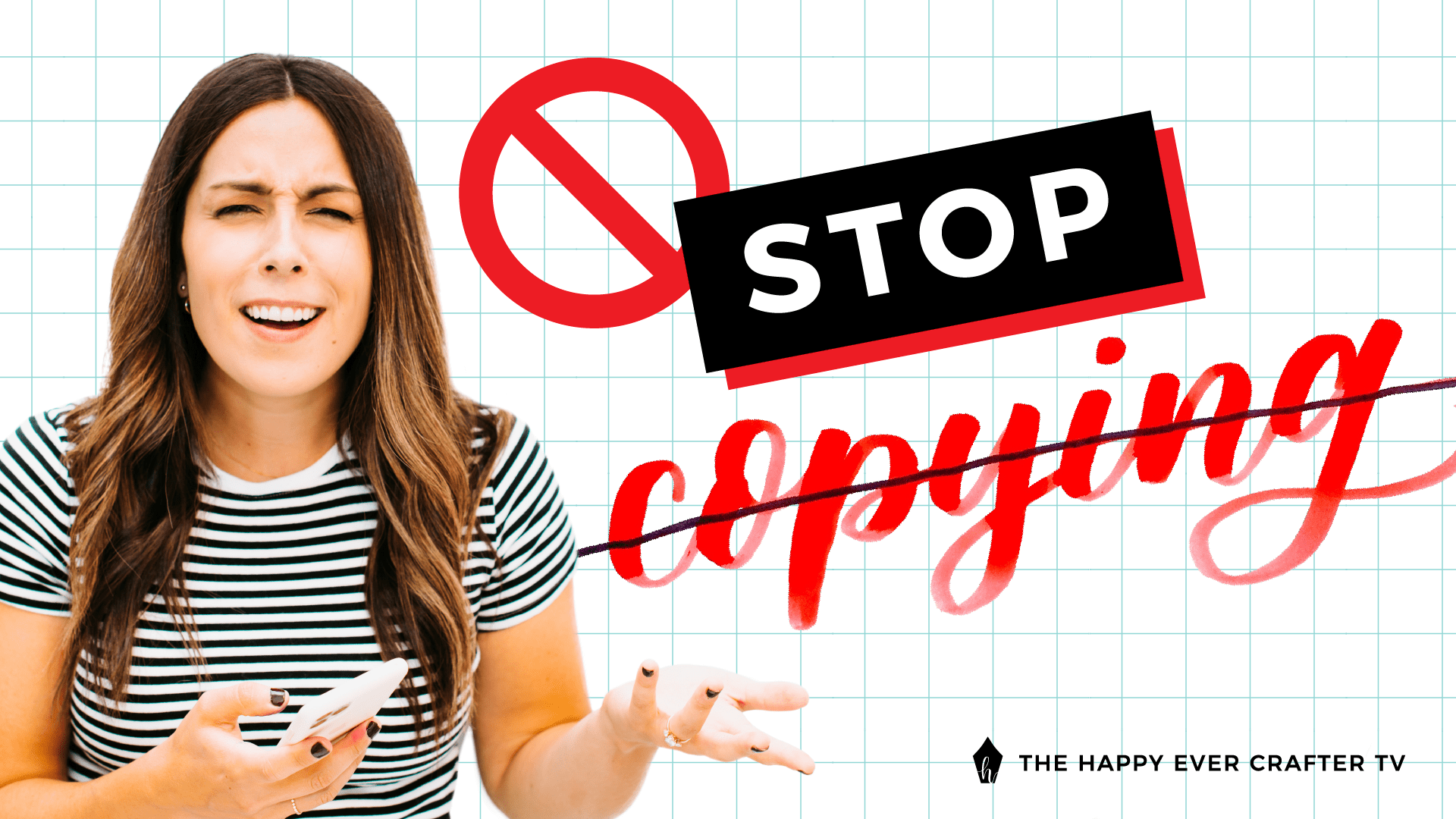In this post, I want to address the difference between inspiration and copying, especially if you’re a beginner calligrapher.
Copying in the creative world – there’s a fine line when it comes to the difference between inspiration, and straight-up COPYING or theft. I’m no expert, but I want to share my thoughts in hopes that it’ll help anyone who’s struggling with this.
First Things First…
The links below may be affiliate links where appropriate. This means that your purchase through these links may result in a few cents in payment to me, to support creating further resources like this one! That being said, I will never suggest supplies that I do not personally use and fully recommend.
Resources Mentioned
- Steal Like an Artist by Austin Kleon
Prefer watching over reading? Feel free to skip right to the video and see these in real-time! ??
Let’s be honest… we all have to learn from somewhere. And as we learn, we naturally copy our teachers. That’s just how it works. From the day we’re born, we are copying our parents and learning. Copying is good. But there does come a point where copying becomes not OK anymore. That’s where people get stuck, and that’s what I want to talk about.
I highly recommend reading the book “Steal Like An Artist” by Austin Kleon; it is a definite must-read for artists and creatives and has shaped the way I think about “stealing” (aka “copying”). A lot of what I’m saying here today has been influenced by his book, especially the idea that:
In some sense, everything is a copy in some way, shape, or form.
Where this gets tricky, though, is when you’re LEARNING art techniques. For example, it’s really easy to get caught up in learning only your instructor’s style – and let’s be honest, we LEARN by copying. Copying is FINE when you’re learning. In fact, it’s one of, if not THE most helpful way to learn.
But if you only learn from one person, or one source, and you don’t expand past that and gather inspiration from other sources, then not only will you end up doing nothing but stealing that style, but you’ll also be completely unoriginal – which is a quick way to NOT set yourself apart as an artist.
To make a long story short, understand this: you are always, even subconsciously, being inspired by and copying bits of other people’s work. You’re naturally going to have ideas in your mind that have been shaped and moulded by the other people you’re following and watching. All of that is TOTALLY OK and normal!
The danger zone is when you fixate on ONE person or ONE piece, and try to replicate that exact style in your work, and then call it your own. That’s when it turns into copying or theft.
This is a big topic, and there are tons of nuances, and I just want to give you some concrete tips to take with you from this post so that you can avoid being in that “danger zone” yourself.
Tip #1: Copy to learn
You can use copying to LEARN, but don’t share it. If you do share it, just credit it!
Tip #2: Draw inspiration from other industries
It’s a great idea to get inspiration from completely different sources than your industry. Architecture? Nature? Food? The more places that you draw from that are different, the less likely what you do will be considered unoriginal or considered copying.
Tip #3: If you can remember your inspiration, you should credit it
Use this as a general rule!
Tip #4: If you’re not sure…give credit
If it *feels* like you should maybe credit someone, but you’re torn, the answer is probably YES.
Bonus: A little-known fact if you’re afraid of YOUR work getting ripped off…
You do not have to “register” a copyright for your work to be protected – a “copyright” exists from the MOMENT you create something.
? I KNOW, RIGHT?! I always, always, always thought I had to legally “register” a copyright on something if I wanted to make sure it didn’t get ripped off. Nope! This can of course get a little complicated, so if you want to know more about copyright and trademarks and all that jazz, check out this video with Christina Scalera, who’s an attorney for creatives.
And that’s a wrap!
It all just boils down to this: copying isn’t inherently BAD. It’s an important part of creativity. So when in doubt, just give the shout out!

That was great and clarified a lot! Thank you, Becca!
You always seem to provide GREAT information, thank you!
So just to clarify what you’re saying is when I copy someone’s painting or drawing for
my own use, I have to credit them as inspiration for mine.
(I paint greeting cards for family and friends. I would then have to credit the original artwork some-
where on my card?) . . . .Do I have this correct?